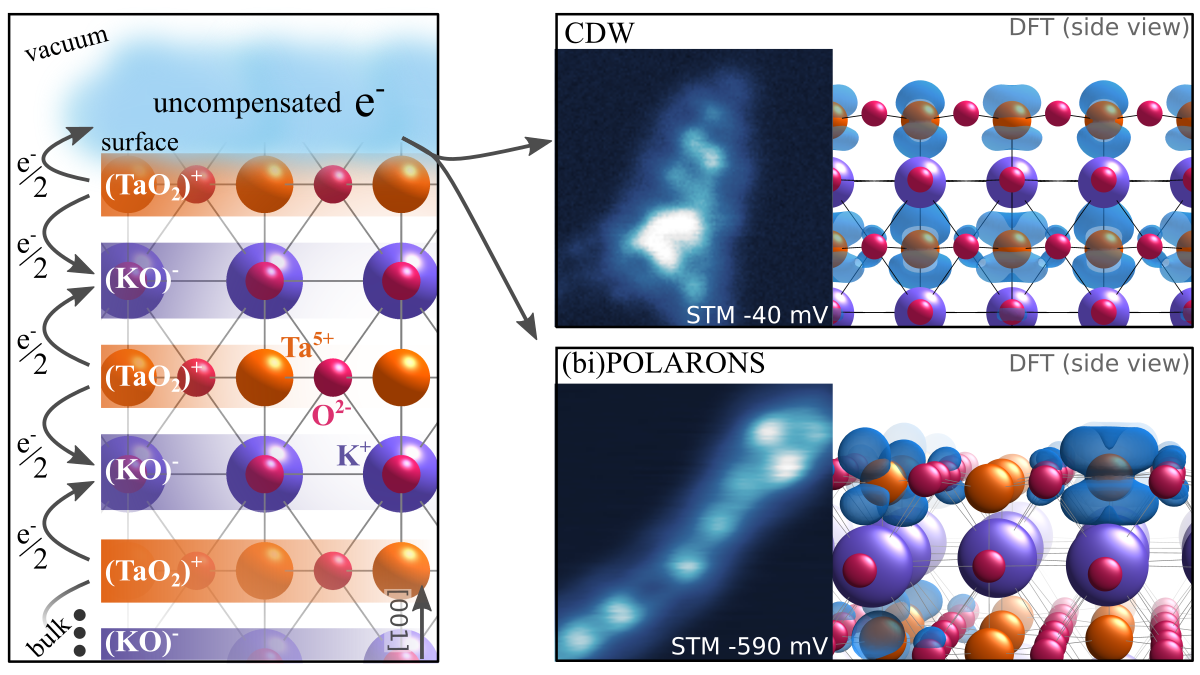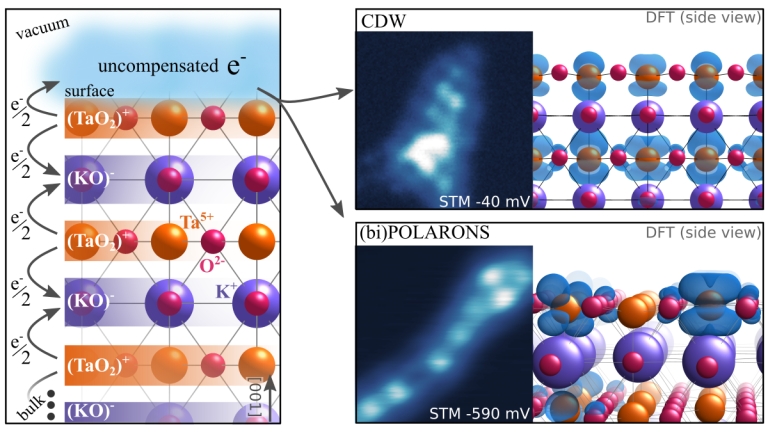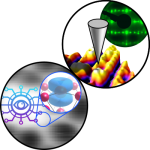Published in Nature Communications
Excess charge on polar surfaces of ionic compounds is commonly described by the two-dimensional electron gas (2DEG) model, a homogeneous distribution of charge, spatially-confined in a few atomic layers. Here, by combining scanning probe microscopy with density functional theory calculations, we show that excess charge on the polar TaO2 termination of KTaO3(001) forms more complex electronic states with different degrees of spatial and electronic localization: charge density waves (CDW) coexist with strongly-localized electron polarons and bipolarons. These surface electronic reconstructions, originating from the combined action of electron-lattice interaction and electronic correlation, are energetically more favorable than the 2DEG solution. They exhibit distinct spectroscopy signals and impact on the surface properties, as manifested by a local suppression of ferroelectric distortions.
In this video, first author Michele Reticcioli talks about the paper:
Authors:
Michele Reticcioli, Zhichang Wang, Michael Schmid, Dominik Wrana, Lynn A. Boatner, Ulrike Diebold, Martin Setvin, and Cesare Franchini
Subprojects:
P07 – Polaron pattern recognition in correlated oxide surfaces
P02 – Surface structure and reactivity of multi-component oxides at the atomic scale



